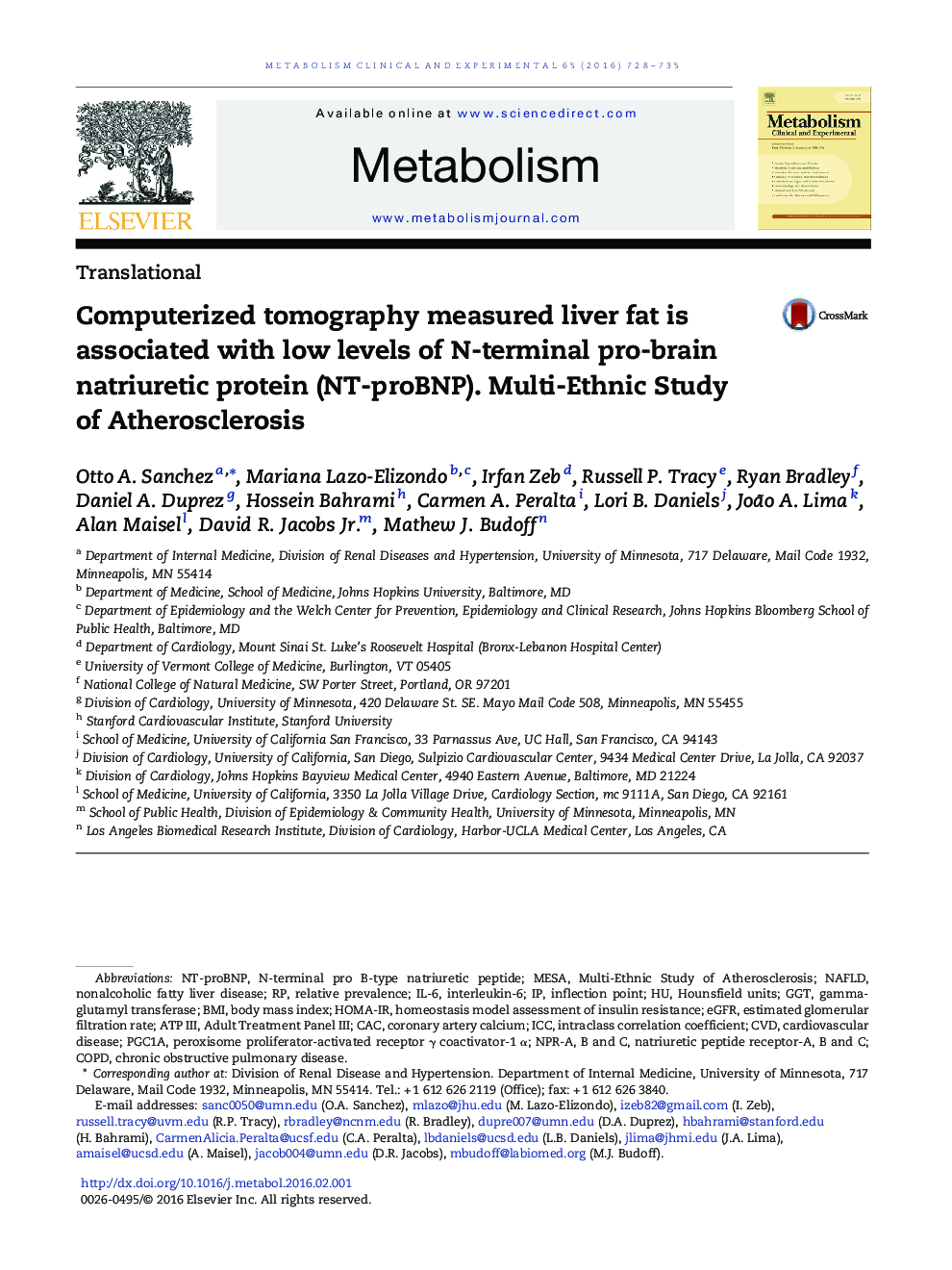| Article ID | Journal | Published Year | Pages | File Type |
|---|---|---|---|---|
| 2805470 | Metabolism | 2016 | 8 Pages |
Background and AimsN-terminal pro B-type natriuretic peptide (NT-proBNP) is inversely associated with diabetes mellitus, obesity and metabolic syndrome. We aim to characterize the association between NT-proBNP and nonalcoholic fatty liver disease (NAFLD), a condition strongly associated with metabolic syndrome.Methods4529 participants from the Multi-Ethnic Study of Atherosclerosis (MESA) free of cardiovascular disease, without self-reported liver disease and not diabetic at their baseline visit in 2000–2002 were included in this analysis. NAFLD was defined by a liver attenuation < 40 HU. Relative prevalence (RP) for NAFLD was assessed adjusted for age, race, and sex, percentage of dietary calories derived from fat, total intentional exercise, alcoholic drinks per week, and interleukin-6 by quintiles of NT-proBNP. Adjusted linear spline model was used to characterize a non-linear association between NT-proBNP and liver fat. The inflection point (IP) was the NT-proBNP concentration where there was a change in slope in the association between liver attenuation and NT-proBNP.ResultsRP for NAFLD decreased by 30% from the lowest to the highest quintile of NT-proBNP, p = 0.01. We observed an inverse linear association between NT-proBNP and liver fat, which plateaued (IP) at an NT-proBNP concentration of 45 pg/mL. Linear regression coefficient (SE) per unit of NT-proBNP less than and greater than or equal to IP was of 0.05 (0.02), p = 0.001 and 0.0006 (0.0008), p = 0.5, respectively; differences between slopes, p < 0.0001.ConclusionsIn this cross-sectional study of a community based multiethnic sample of non-diabetic adults, low levels of NT-proBNP are associated with greater prevalence of NAFLD.
